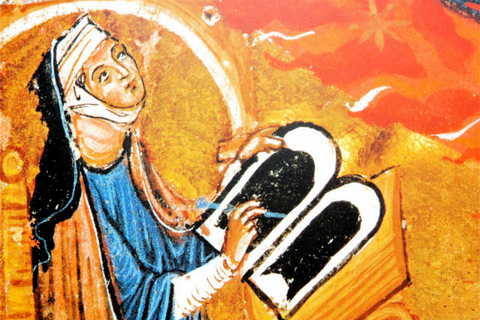If you were lucky enough to travel back in time and have a beer in the middle ages, for example, I don't think you'd like it very much. Or at least it would taste weird to you. And do you know why? For hops, that essential ingredient in today's beers, which began to be included regularly in recipes from the 16th century. Before, and for thousands of years, what was added it was a mixture of herbs and spices to change its flavor, aroma or the alcoholic strength of the beer. It could be honey, cinnamon, sugar, anise, ginger, rosemary, carnations or even roots.
But, it was again a woman who had the wonderful idea of adding the female flower of hops to the mix, around 1100 AD. It just so happens that she kept the recipe a secret from her nuns. Because yes, she was a nun. And deep down it's logical, because during the low and high middle ages, it was really rare that someone knew how to write and read

The protagonist of this post, our Brewing Sister Act is Hildegard von Bingen (1098-1179) and she spent her entire life in a German Benedictine monastery . She of noble origin, she was the youngest of ten brothers, and therefore she was given to the church as a tithe. Her education was entrusted to another woman, Superior Jutta Spanheim, who trained her in subjects such as Latin, Greek, music, botany, and theology. At the age of eighteen she decides to take her robes and she is appointed abbess at the age of 38. From then on, he began a great intellectual activity and, among other things, wrote a treatise on the benefits of hops and another on beer and the use of hops in its manufacture. Hildegarda observed that sweet drinks were very popular and that high consumption of these increased vision problems and even blindness (probably due to diabetes). The bitterness of the beer counteracted the abuse of consumption of this type of beverage. We now know that hops also have mild antibiotic properties and help kill some of the organisms present in the beer wort. But not only that, she was looking for a healthy and nutritious drink. Did you know that during fasting periods in convents the only thing that was drunk was beer? Hildegarda von Bingen advised the nuns under her command to drink beer to “keep rosy cheeks and diseases away”. In Causa et curae, makes a plea in favor of beer: "For its part, beer fattens meat and gives man a healthy color for the face, thanks to the force and good sap of its cereal. On the other hand, water weakens man." Have you read or seen the movie The Name of the Rose? I imagine it like this, a community of nuns with their apothecary, their hop grower and the mother abbess testing the combinations so that the beer had that exact point of bitterness and freshness. And all this while the saint (because Hildegard was canonized in 2013) was also writing two treatises on medicine, music, theology, philosophy and... she even explained the female orgasm to her nuns (this is another topic , but if you are interested I will expand data in our direct on Instagram on the day 03/22). In short, it was thanks to this amazing woman that hops (which grew wild in the Bavarian countryside) were identified as a key ingredient in beer making. And mind you, it wasn't until 1400 that it came to be. Holland, and in 1519 it was condemned as a “weed”. It took until the 16th century for it to be included as a basic ingredient. Santa Hildegarda saw it clearly enough before.Long live Saint Hildegard!


